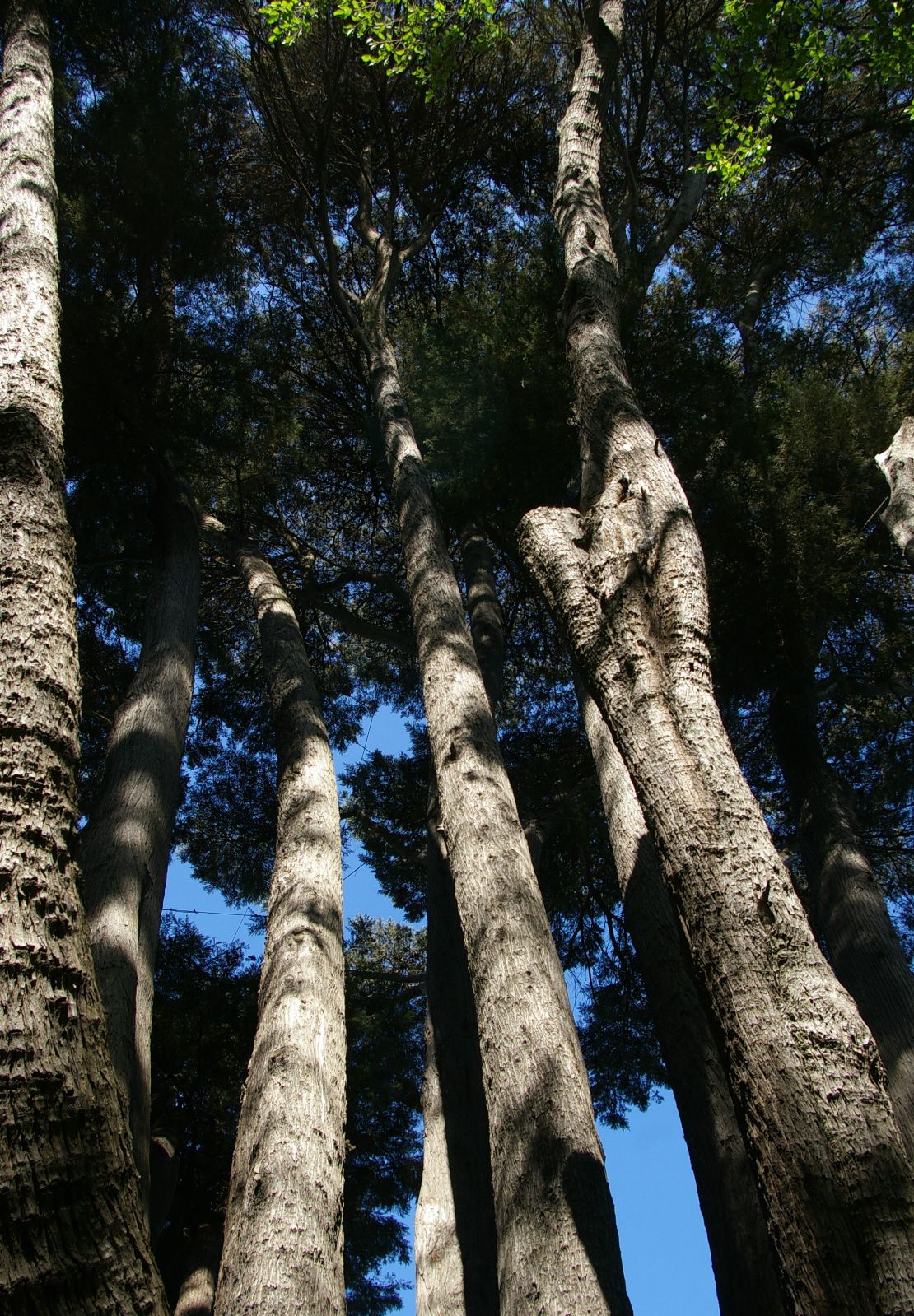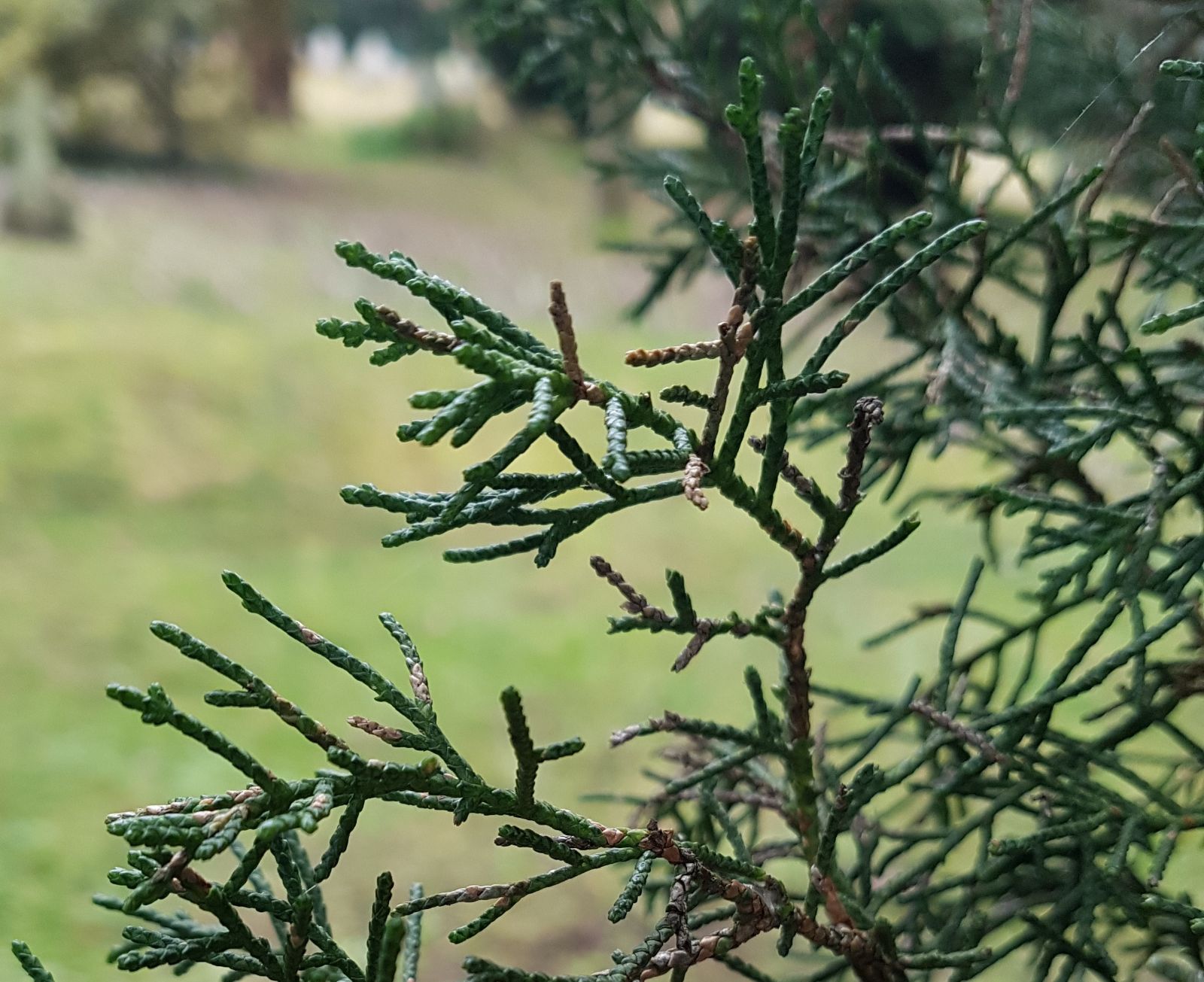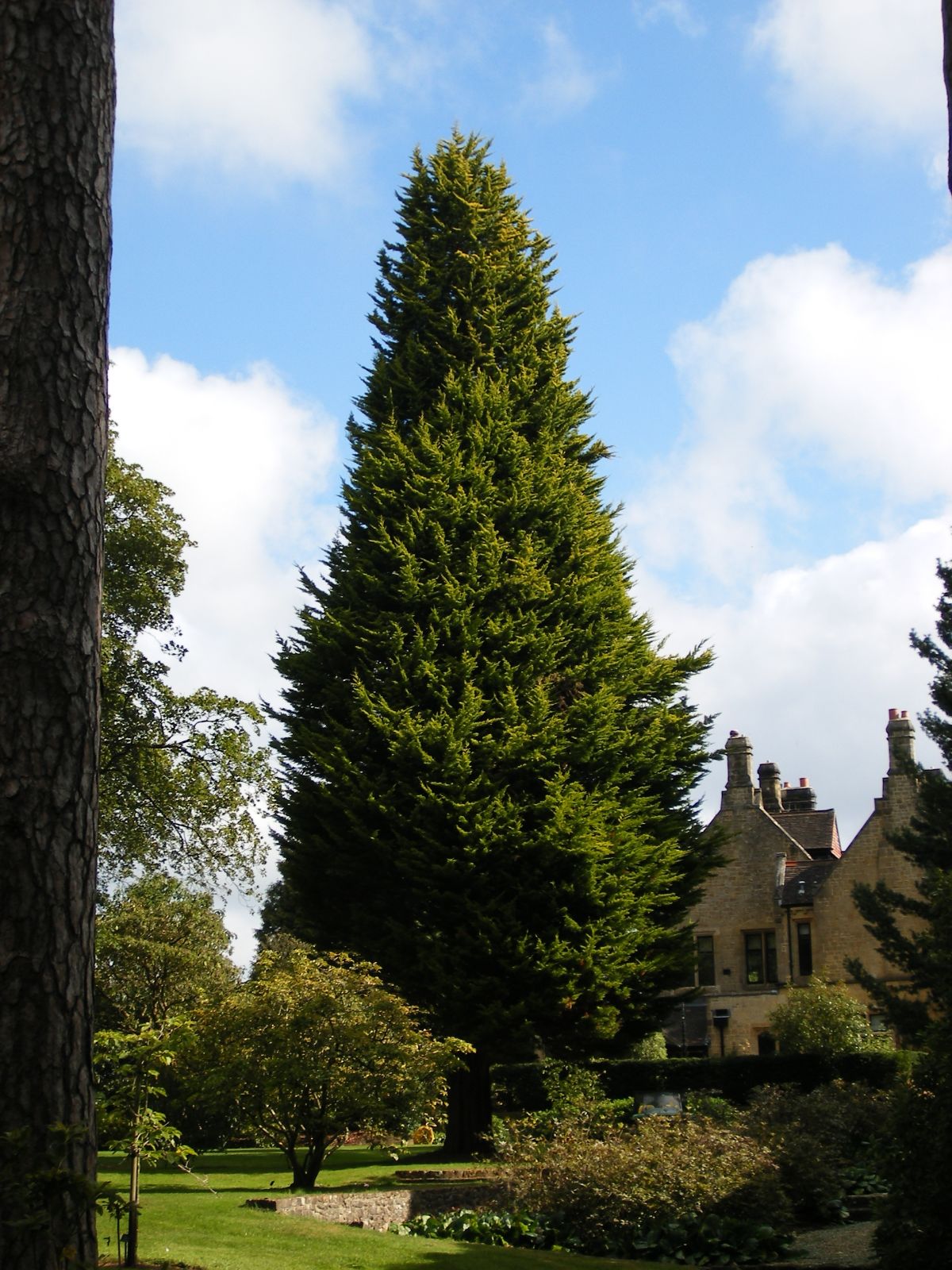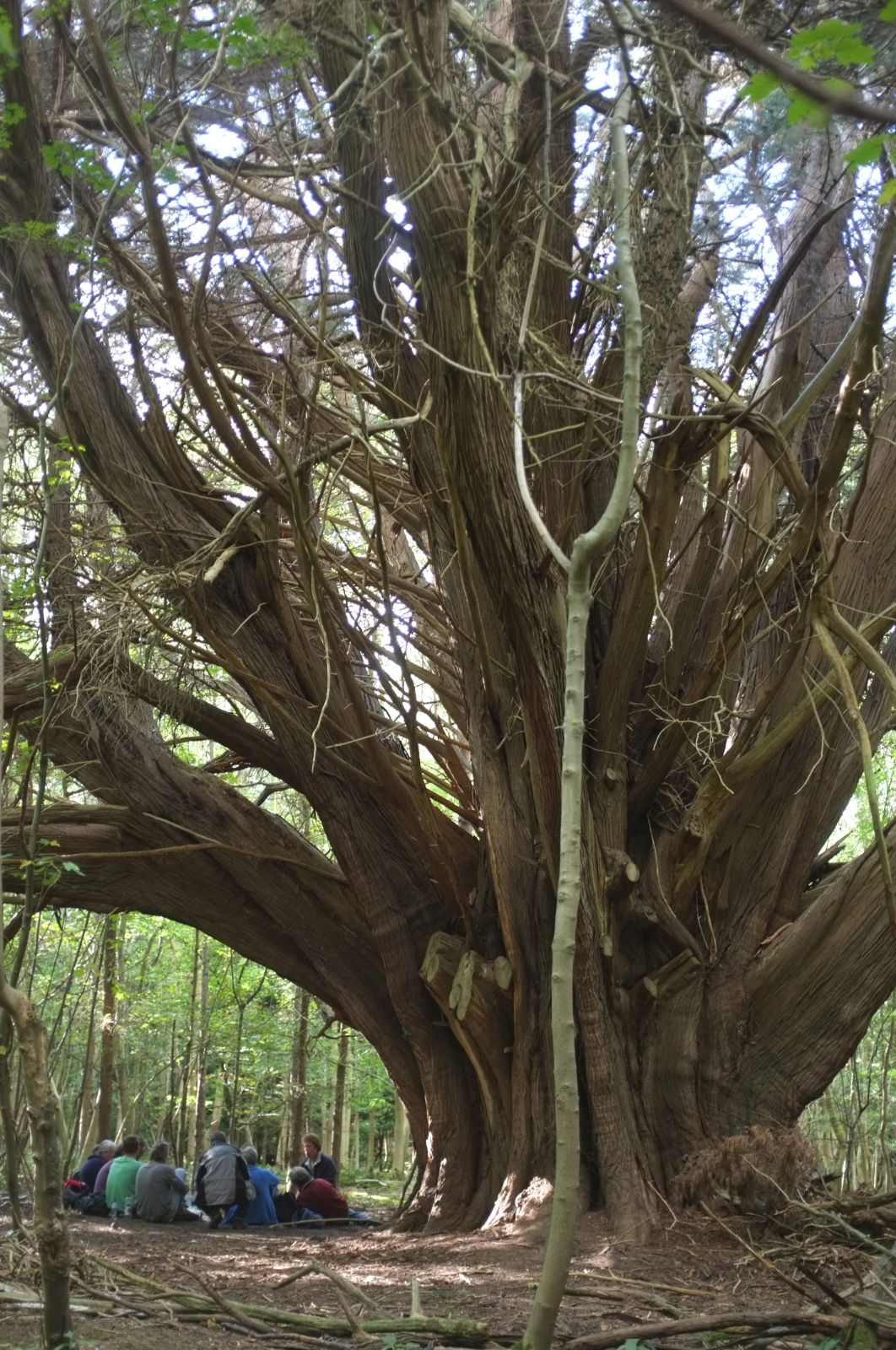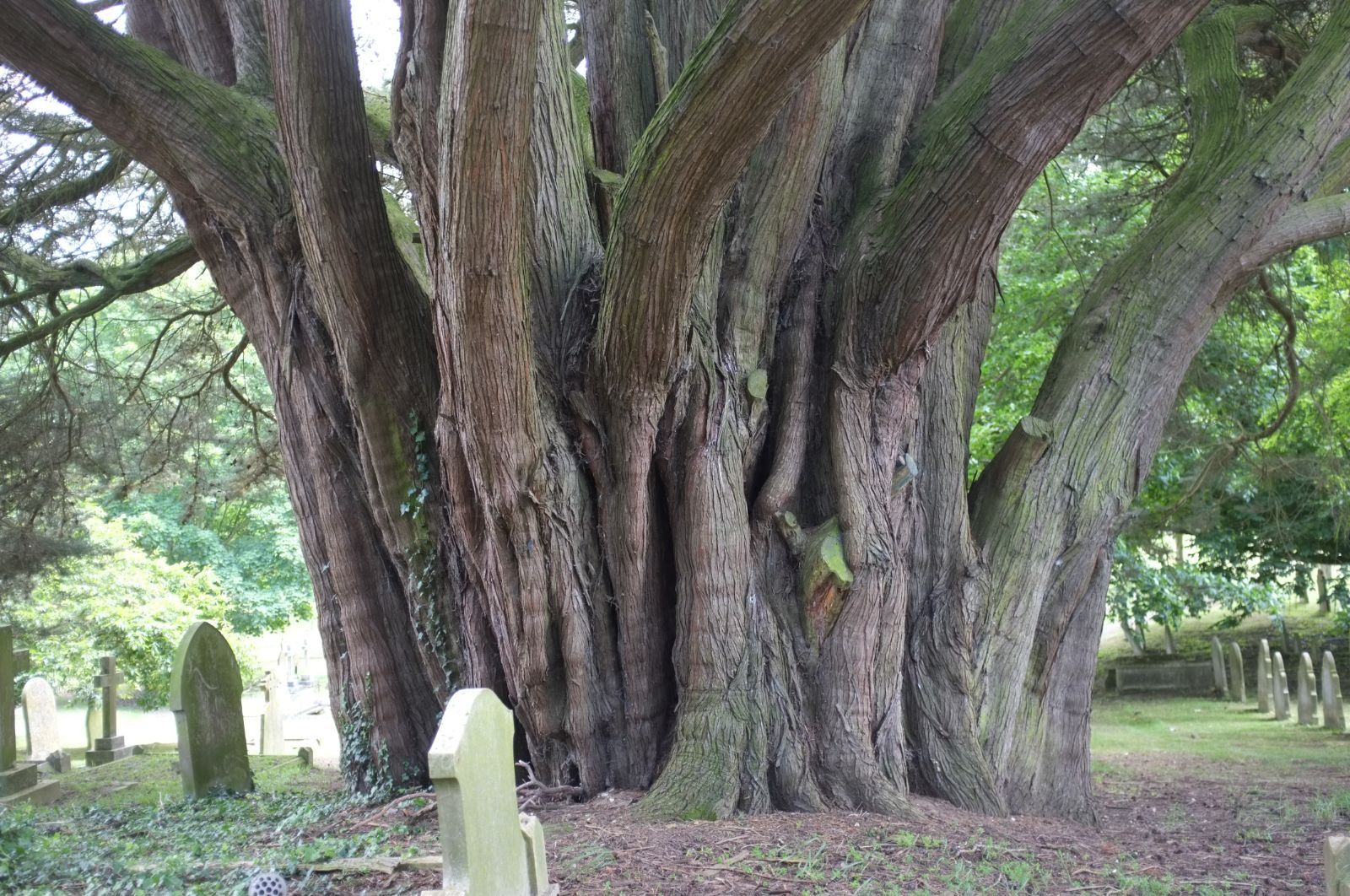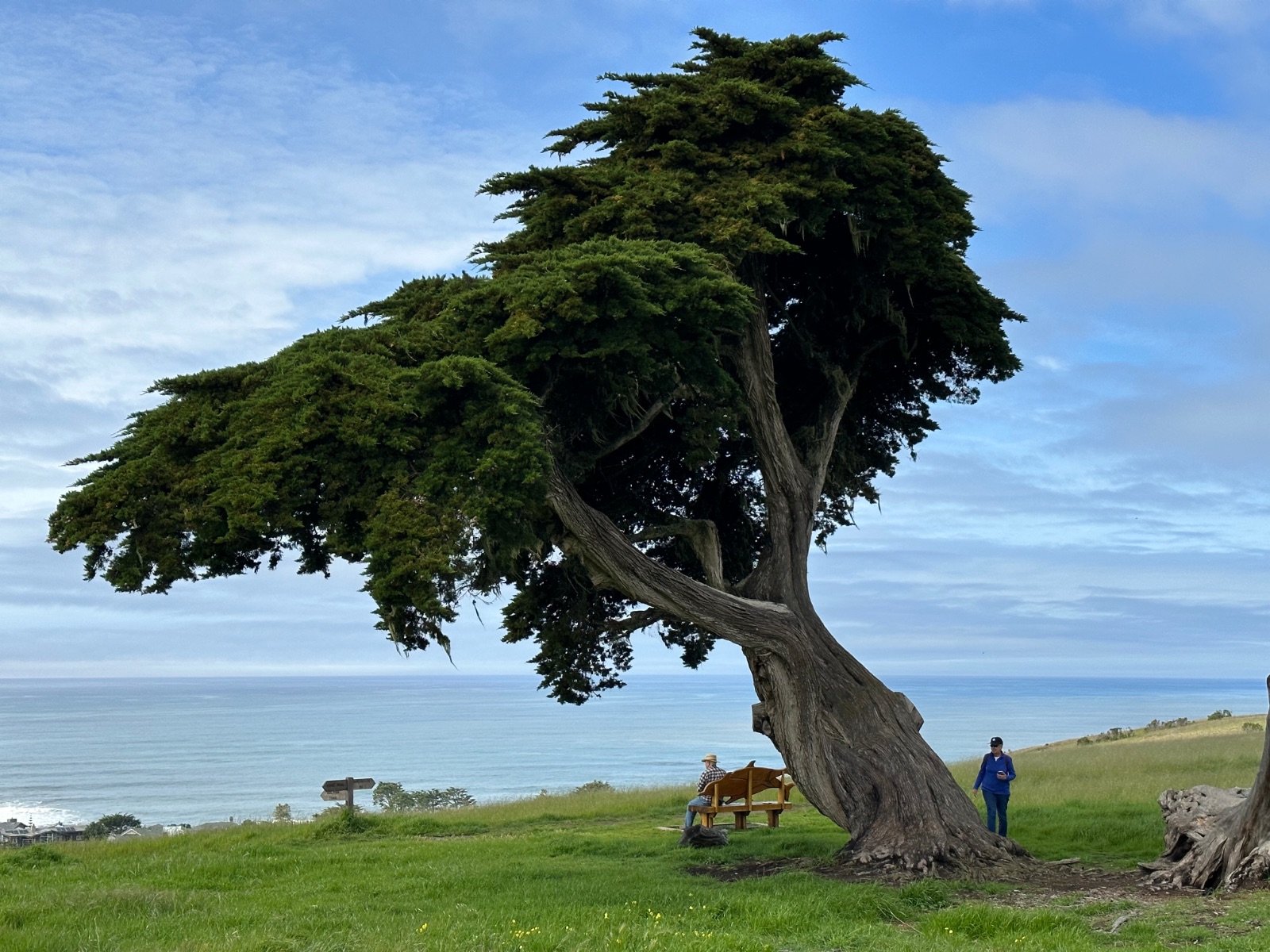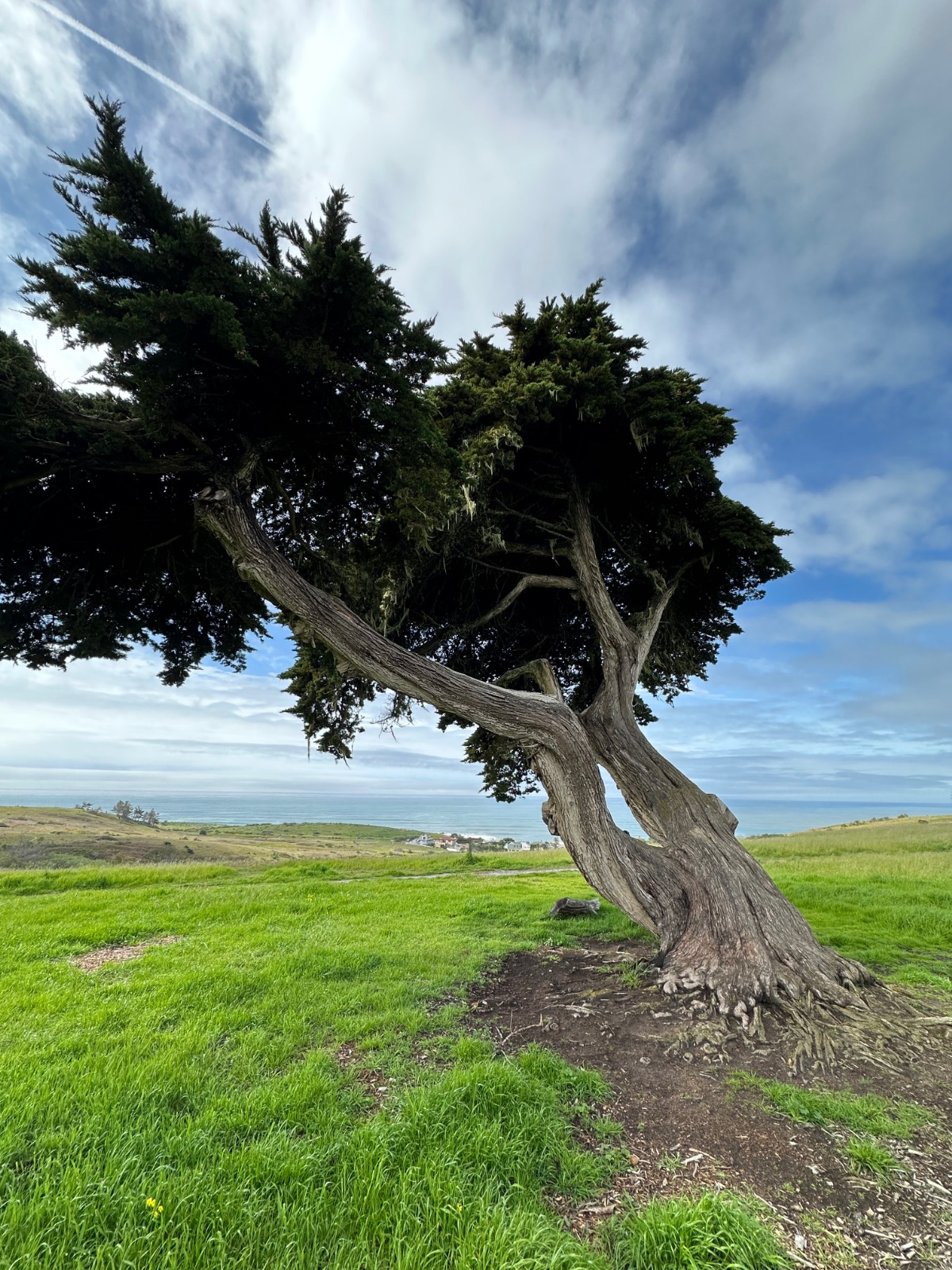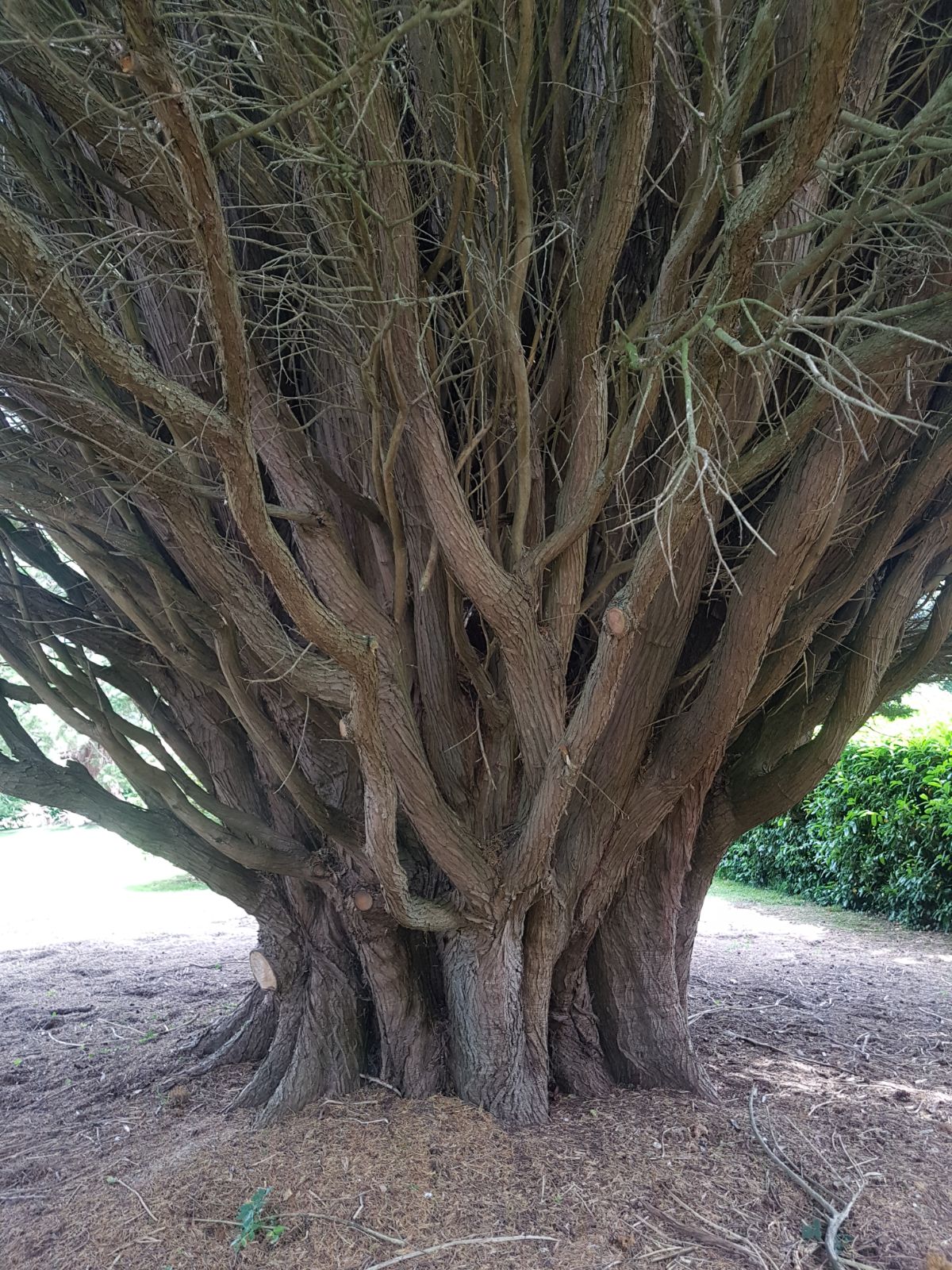Cupressus macrocarpa
Credits
Article from Bean's Trees and Shrubs Hardy in the British Isles
Recommended citation
'Cupressus macrocarpa' from the website Trees and Shrubs Online (treesandshrubsonline.
Infraspecifics
Other taxa in genus
- Cupressus arizonica
- Cupressus austrotibetica
- Cupressus bakeri
- Cupressus cashmeriana
- Cupressus chengiana
- Cupressus corneyana
- Cupressus duclouxiana
- Cupressus dupreziana
- Cupressus forbesii
- Cupressus funebris
- Cupressus gigantea
- Cupressus goveniana
- Cupressus himalaica
- Cupressus lusitanica
- Cupressus macnabiana
- Cupressus sargentii
- Cupressus sempervirens
- Cupressus torulosa
A tree 60 to 90 ft high in cultivation, not more in a wild state; of pyramidal habit when young, becoming eventually flat-topped and with horizontal branches like a cedar of Lebanon. Branchlets much divided in an irregular (not two-ranked or horizontal) manner; the final ramifications terete or somewhat four-sided, 1⁄20 in. thick. Leaves scale-like, 1⁄16 in. long, uniform, closely flattened to the branchlet in four rows, overlapping each other at the base, the exposed part diamond-shaped, thick and rounded at the end. Cones oblong or globose, 1 to 11⁄2 in. long, 2⁄3 to 1 in. wide on short stout stalks; scales eight to fourteen, flattish, with a ridge-like projection in the centre. Seeds brown, minutely warted.
Native of California, where it is confined to two groves near the Pacific, south of Monterey. The larger, Cypress Point Grove, is 2 miles long and about a furlong wide; the other, Point Lobos Grove, is much smaller. The trees grow on the shore cliffs, and being undermined by the sea, occasionally fall into it. At this spot they appear as rugged veterans, identical in habit with the cedar of Lebanon. The species was introduced about 1838, and has proved to be one of the hardiest of the true cypresses. It succeeds much the best in warm maritime localities, but even in inland places like Kew it is over 80 ft high. When young it is more tender, and at this state is so distinct in general appearance as to show no apparent relationship to the adult type. The leaves are 1⁄8 in. long, awl-shaped, with sharp, outwardly spreading points; the shoots much longer and more attenuated, the leaves well apart. As the plants increase in age, they gradually assume the adult state described above; but when, as they sometimes are in mild counties, used for hedges and clipped back annually, the young growths retain this juvenile type of foliage and branchlet. The young growths are sometimes distinctly lemon-scented.
The following are some of the largest specimens recorded recently in the British Isles, notable either for height or girth: Beauport, Sussex, 85 × 27 ft at 1 ft (1965); Bicton, Devon, 110 × 12 ft (1964), a fine tree; Northerwood House, Hants, 117 × 201⁄2 ft at 3 ft (1963); Montacute House, Somerset, 117 × 221⁄2 ft (1962), good bole; Melbury, Dorset, 117 × 181⁄2 ft (1957); Watcombe, Torquay, 115 × 273⁄4 ft at 1 ft (1962); Mamhead, Devon, 105 × 163⁄4 ft (1963), a very shapely tree; Tregothnan, Cornwall, 120 × 191⁄2 ft (1965), a very fine tree on an 8 ft bole.
From the Supplement (Vol. V)
specimens: Coolhurst, Sussex, 70 × 5 ft in 1910, now 111 × 11 ft, a fine tree (1976); Wakehurst Place, Sussex, pl. 1918, 98 × 123⁄4 ft (1979); Beauport, Sussex, three of many fine trees, 102 × 221⁄4 at 4 ft, 75 × 291⁄4 ft at 1 ft, 88 × 31 ft at 2 ft (1980); Northerwood House, Hants, 115 × 211⁄2 ft at 2 ft (1976); Embley Park, Hants, 115 × 181⁄2 ft at 3 ft (1979); Minstead House, Hants, a very fine tree, 102 × 183⁄4 ft (1981); Barton Manor, Isle of Wight, 108 × 193⁄4 ft (1972); Abbotsbury, Dorset, 121 × 153⁄4 ft (1980); Melbury, Dorset, 121 × 193⁄4 ft and 121 × 19 ft (1980); Montacute, Som., 120 × 25 ft (1984); Watcombe, Torquay, Devon, 115 × 273⁄4 ft at 3 ft (1971); Bicton, Devon, by fence, 98 × 283⁄4 ft at ground-level, (1977) and, at edge of Wilson Collection, 124 × 141⁄2 ft and 111 × 141⁄4 ft (1983); Tregrehan, Cornwall, 105 × 26 ft at 3 ft (1979); Bellamoar, Isle of Man, pl. 1897, 90 × 251⁄2 ft, forking (1978); Johnstown Castle, Co. Wicklow, Eire, 110 × 26 ft (1974); Powerscourt, Co. Wicklow, Eire, pl. 1898, 102 × 383⁄4 ft at ground-level (1980); Adare Manor, Co. Limerick, Eire, by Drive, 70 × 23 ft with a clear bole of 15 ft (1975).
The tree at Montacute mentioned above is probably the only one to survive of the first, small-scale, introduction of 1838. But it is still vigorous, and gained 14 in. in girth between 1970 and 1984.
Note (1987): The tree at Embley Park mentioned above is dead and was felled in 1987.
The champion specimen of Monterey cypress, only recently measured, is: Moreton House, Bideford, Devon, 132 × 31 ft (1986).
cv. ‘Lutea’. – Although superseded as an ornamental by ‘Donard Gold’ and ‘Goldcrest’, this is still useful in exposed coastal areas, as it withstands sea-winds very well. It should have been added that ‘Goldcrest’ has feathery, juvenile foliage, but in spite of that is reasonably hardy. Another golden Monterey cypress is ‘Golden Pillar’, which is narrowly columnar, tapered at the apex, but rather paler than the other two. It was put into commerce by Messrs Jackman.
'Crippsii'
A juvenile state, with stiff branches.f. fastigiata (Carr.) Rehd.
Synonyms
C. lambertiana vat. fastigiata Carr
'Lutea'
Young shoots and leaves of a beautiful yellow. Of the same kind, but with brighter golden foliage, are ‘Donard Gold’, raised by the Slieve Donard Nursery Co. in 1935; and ‘Goldcrest’, raised by Messrs Treseder of Truro shortly after the second world war. As is the case with many golden-leaved conifers, none of these varieties develop their full colouring if grown in a shaded position.




